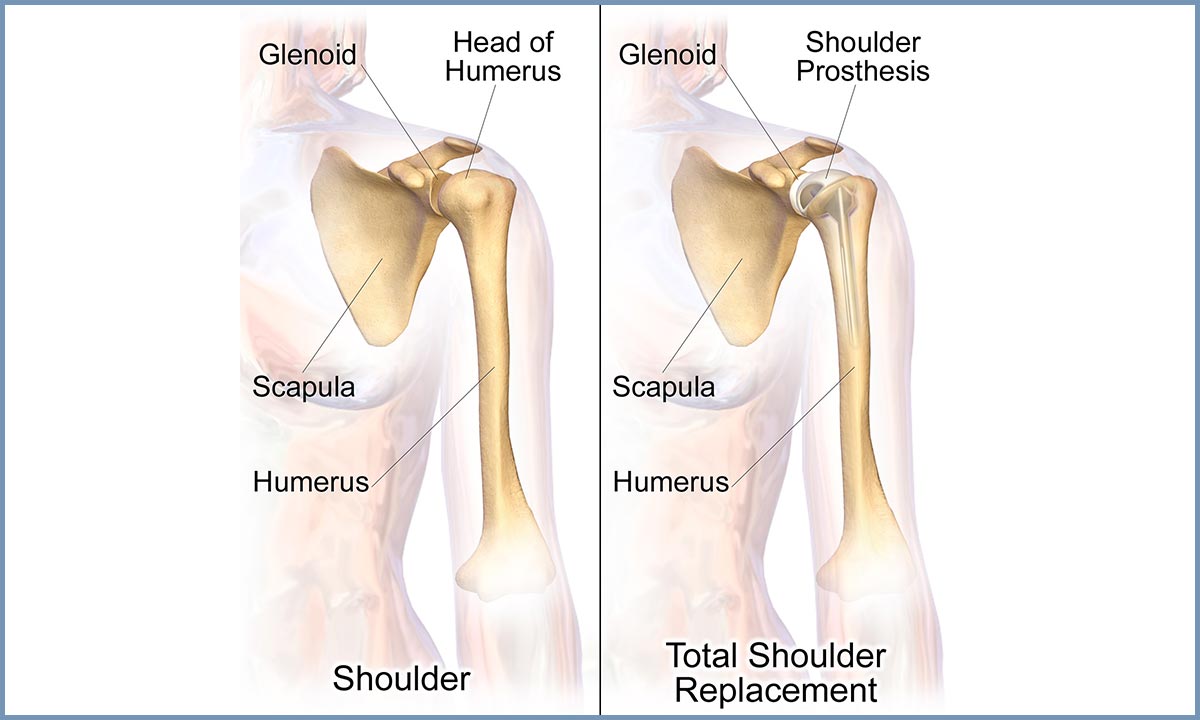 Total Shoulder, Reverse TSA (Shoulder Replacement)
Total Shoulder, Reverse TSA (Shoulder Replacement)
The shoulder, like the hip, is a ball-and-socket joint. This means that the top of the humerus bone is round and fits into the socket portion of the shoulder blade. With a total shoulder replacement, the doctor replaces the ball at the top of the humerus with one made of metal and covers the socket of the joint with a plastic pad or lining against which the new ball moves. With a partial replacement, only the ball gets replaced, and in some instances (such as if a previous replacement has not worked or if a patient has a torn rotator cuff), the new ball is attached to the shoulder blade and the socket to the top of the humerus, which is called a reverse TSA.








